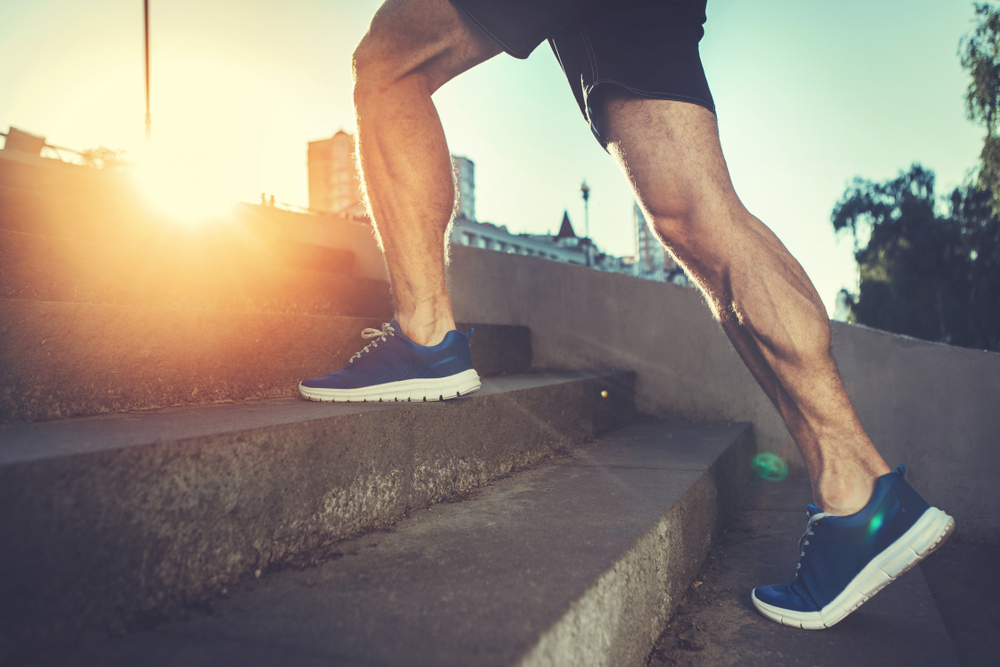 If you plan to start trail running, having stronger and more mobile ankles is crucial to running better and can prevent a lot of injuries that can happen when running. Ankles are the shock absorbers of your body when running and carry the majority of human weight, they play a pivotal role in enhancing your running experience. To learn more about preventing injuries and building ankle strength, continue reading below.
If you plan to start trail running, having stronger and more mobile ankles is crucial to running better and can prevent a lot of injuries that can happen when running. Ankles are the shock absorbers of your body when running and carry the majority of human weight, they play a pivotal role in enhancing your running experience. To learn more about preventing injuries and building ankle strength, continue reading below.
Weak Ankles are a Pain All Over
Ankle weakness or lack of mobility can lead to foot, knee, or hip pain. Tight, immobile ankles can play tug-of-war with the rest of the body, causing tension in the feet and calves, which gradually causes the knee and hip to not function correctly.
Tight or weak ankles can also limit dorsiflexion (or the movement of the toes toward the ankle, crucial in the swing of a runner’s stride) which significantly limits the gate and power in each step, as well as being linked to increased risk of plantar fasciitis or ACL injuries
Who is at risk of ankle injuries
While trips and slips can be sustained by even the most seasoned runner, ankle strength and practiced stability will lessen the likelihood of surprise sprains. Those returning to running, especially after sustaining a previous ankle injury, are at a higher risk of re-injuring the area.
Mobility can also be a cause for injury. Dr. Carbiener also states, “Hypermobile athletes have a higher injury rate since they do not have the same stability. However, a stiff foot and ankle can have trouble reacting on the trail. Either end of the spectrum of tightness is not ideal, a runner wants to be in the middle.”
How to Prevent Injury and Gain Power
While ankle injuries are common, they are also easily preventable. By incorporating daily strength and mobility practices, improving form, working on balance and coordination, and finding the right footwear, ankle injuries can be mitigated, and full power can be restored to the stride.
Exercises for unstable ankles
Strength and mobility are some of the easiest places to start. Hillary Osborne, a NSCA personal trainer and ultrarunning coach with Blaze Strength and Endurance in Lakewood, Colorado, explains, “The foot may be the first point of contact, but the ankle is the connector of the big toe to the calf. As long as there is strength and mobility, we can control the ankle and all of its movements. Without that control, we run the risk of injury.”
Working on balance and coordination
Rocky trails require stability, which is a project for the entire body. Certified personal trainer and body balance coach Becca Jay, of Get Up! Training in Littleton, Colorado, explains, “Balance starts with the question, ‘can you figure out where your body is in space?’ This can be done with single-leg or closed-eye exercises. Balance connects people with their bodies, but injuries, trauma, and stress all make it hard to be aware of where the body is.”
Creating more balance in the body can be done with both dynamic as well as static exercises. Static balance exercises, or practices of holding a single balance position, help increase the mind-body connection and create a better understanding of where the body is in space. Dynamic balance works to create more eccentric (lengthening) contractions and help develop stronger muscle fibers in the ankles and feet, as well as engage the larger above muscles, such as the gluteus group and abdominals. Dynamic balance can be done with single-leg hops both back and forth and lateral, activities on the bosu ball or focused yoga practice.
When working on balance, Jay recommends, “Notice where you are without judgment. Don’t beat yourself up if balance does not come easy. The human body does not come out symmetrical. Pay attention and do what you can to support your body to be durable.”
Adjusting form
Pronation, or the inward movement of the foot while running, is a natural part of a running stride. However, overpronation occurs when the inward roll of the foot becomes excessive, flattening out the arch. Over time, overpronation can lead to lasting foot, ankle, knee, or hip pain that is difficult to correct. Making time to see a running gait specialist and ensuring that ankle pain is not coming from a running mechanics issue can save from lasting injury.
Click here to Continue Reading
Original article published on trailrunnermag.com








